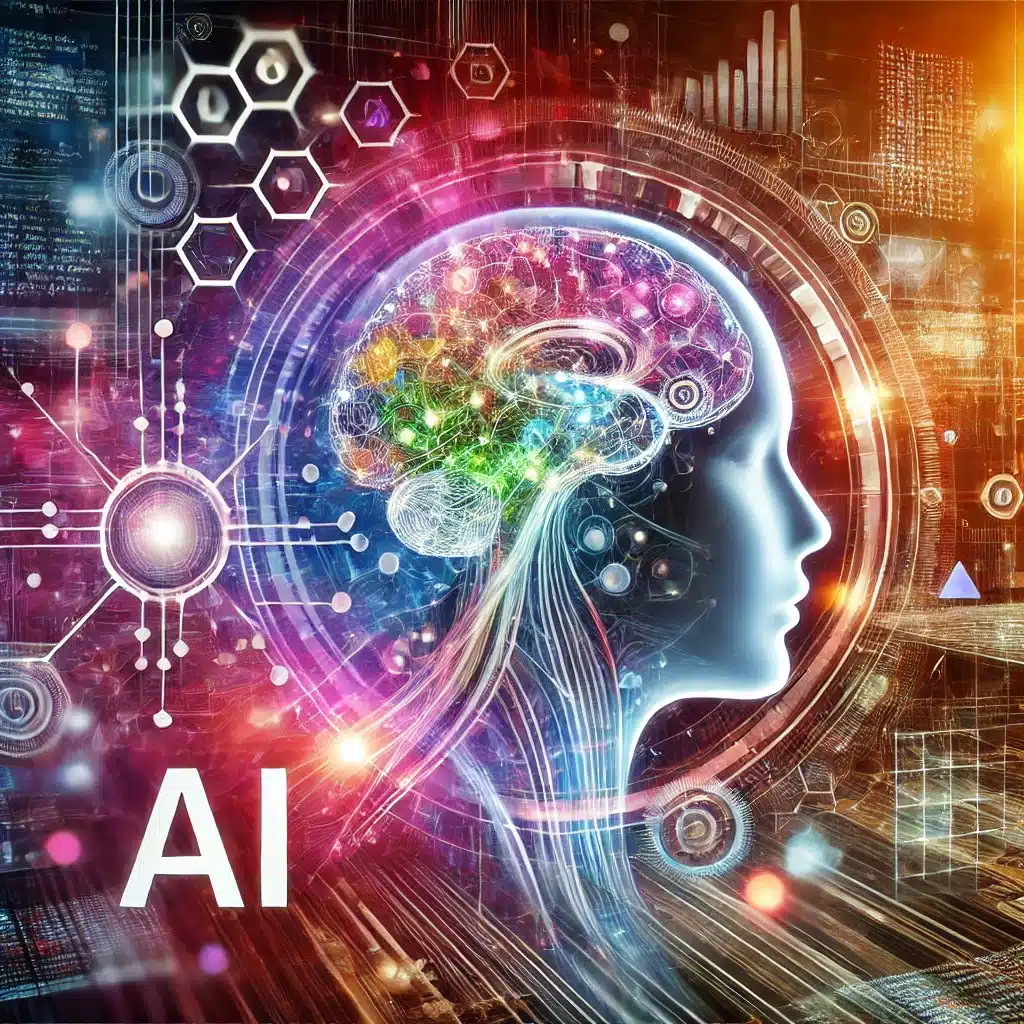Artificial intelligence (AI) has become an integral part of our daily lives, impacting various sectors from healthcare to finance. However, while AI technologies offer numerous benefits, they also come with challenges, one of the most significant being algorithmic bias. This article aims to delve into what algorithmic bias is, how we can detect it, best practices for mitigating it, ensuring fairness, and its broader implications on society. Understanding these aspects is crucial in developing AI systems that are both effective and equitable.
What is Algorithmic Bias in Artificial Intelligence?
Defining Algorithmic Bias
Algorithmic bias refers to a situation where an AI system produces results that are systematically prejudiced due to erroneous assumptions in the machine learning algorithms. These biases can stem from the data used to train these algorithms, human biases that inadvertently get embedded in the system, or from other systemic issues within the AI technologies. Essentially, algorithmic bias reflects how the decision-making process in an AI can unfairly favor one group over another, leading to undesirable outcomes.
How Does Bias Develop in AI Systems?
Bias in AI systems can develop in numerous ways. One common cause is the data used to train machine learning models. If the training data is not representative of the diverse population it aims to serve, the algorithm may learn and reinforce existing biases. Human biases also play a role; the individuals who design and implement AI systems might unintentionally introduce their own biases into the models. Moreover, historical data used in training may carry forward societal prejudices, leading to algorithmic discrimination.
Examples of Algorithmic Bias in Real-World AI Applications
There are several real-world examples of bias in AI. In facial recognition systems, studies have shown that these technologies tend to have higher error rates for individuals with darker skin tones, indicating racial bias. Gender bias is another concerning issue; AI recruiting tools have been found to favor male candidates over females for certain roles due to biased training data. Such examples illustrate how algorithmic bias can have significant, real-life consequences.
How Can We Detect Bias in AI?
Techniques for Bias Detection
Detecting bias in AI involves several techniques. One approach is to analyze the outputs of AI models for disparities in treatment or impact across different demographic groups. Computational tools like fairness metrics can help in identifying potential bias. Auditing the decision-making process is also essential, looking closely at how data and algorithms interact to produce outcomes.
The Role of Training Data in Bias Detection
Training data plays a pivotal role in bias detection. By carefully examining the data sets used to train AI models, we can identify sources of bias. It’s important to ensure that the training data is diverse and representative of the target population. Techniques like re-weighting and re-sampling the data can help in mitigating bias at this stage. Understanding the composition and quality of the training data is fundamental in developing trustworthy AI.
Common Bias Detection Tools and Technologies
There are several tools and technologies designed for bias detection in AI. For example, IBM’s AI Fairness 360 toolkit and Google’s What-If Tool can help developers identify and address bias in AI models. These tools provide actionable insights and visualizations that highlight potential bias. They also offer guidelines for bias mitigation to ensure more equitable AI applications.
What Are the Best Practices for Mitigating Bias in AI?
Strategies for Reducing Bias
To mitigate bias in AI, several strategies can be employed. One effective approach is to implement fairness constraints in the algorithms, ensuring that the outcomes are equitable across all groups. Another strategy is continuous monitoring and auditing of AI systems to detect and address bias promptly. Transparency in AI development processes, along with stakeholder involvement, can also help in maintaining responsible AI practices.
The Importance of Diverse Training Data Sets
Diverse training data sets are critical in mitigating bias. If the data used to train AI models encompasses a wide range of variables across different demographics, the AI is more likely to produce fairer outcomes. Including data from various racial, ethnic, and gender groups ensures that the AI system does not inadvertently uphold human biases. In essence, diversity in training data is foundational to creating equitable AI.
Developing Trustworthy AI Through Equitable Practices
Equitable practices in AI development are vital for building trust in AI systems. This includes adopting a multidimensional approach to fairness, encompassing equity, transparency, accountability, and inclusivity. AI developers should engage with diverse community stakeholders to understand the broader implications of AI systems. By embedding these principles, we can promote the development of trustworthy AI that benefits everyone.
How to Ensure Fairness in AI Systems?
Principles of Fairness in Machine Learning
Fairness in machine learning is guided by several principles. These include treating similar individuals similarly, avoiding disparate impacts on different groups, and ensuring that AI decisions respect human rights and dignity. Establishing these principles from the outset helps in creating machine learning algorithms that uphold fairness and reduce bias. Continuous evaluation and refinement are essential in maintaining these standards.
Implementing Fairness in AI Algorithms
Implementing fairness in AI algorithms requires a rigorous approach. Developers should leverage fairness-aware algorithms that are designed to minimize bias. Regularly updating the AI models with new and more inclusive data sets can also enhance fairness. Additionally, employing a diverse team of developers can help in identifying and mitigating potential biases, ensuring that the AI systems are representative and just.
Monitoring and Updating AI Systems for Ongoing Fairness
It’s important to continuously monitor and update AI systems to ensure ongoing fairness. This involves routine performance checks to detect any emerging biases and making necessary adjustments. Engaging in regular bias audits and incorporating feedback from affected communities can provide valuable insights for improvement. Staying committed to fairness requires an ongoing effort throughout the lifecycle of AI technologies.
What Are the Implications of AI Bias on Society?
The Impact of AI Bias on Different Demographics
AI bias can have profound implications on different demographics. For instance, racial bias in AI can lead to discrimination in areas such as criminal justice and employment. Similarly, gender bias in AI can reinforce stereotypes and limit opportunities for women and non-binary individuals. These biases can exacerbate existing inequalities, underscoring the importance of addressing bias in AI to foster an inclusive society.
AI Bias in Facial Recognition and Gender Bias
Facial recognition systems are particularly notorious for exhibiting bias. Studies have shown that these systems perform poorly on individuals with darker skin tones and women, highlighting both racial and gender bias. Such biases can lead to misidentification and wrongful accusations, raising concerns about the ethical use of AI. Addressing these issues requires stringent regulation and the development of more accurate and unbiased recognition systems.
Building Public Trust in AI Through Transparency and Accountability
Building public trust in AI is crucial for its widespread acceptance and ethical deployment. This can be achieved through transparency in AI operations and accountability for the outcomes. Clear communication about how AI systems make decisions and the steps taken to ensure fairness can help in garnering public trust. Additionally, involving the public in discussions and decisions related to AI can foster a sense of ownership and trust in technology.
Frequently Asked Questions
Q: What is bias in algorithms?
A: Bias in algorithms refers to the systematic and unfair discrimination that can occur in AI and machine learning systems. This happens when the input data or the design of algorithms contains inherent biases, leading to biased outcomes in algorithmic decision-making.
Q: How can bias in data impact AI technologies?
A: Bias in data can significantly impact AI technologies by skewing the results and perpetuating prejudices. For instance, if a data set used for training an AI system contains unconscious biases, the resulting model will likely exhibit these biases, affecting its performance and fairness.
Q: What are some applications of AI that are vulnerable to bias?
A: Applications of AI such as hiring processes, law enforcement, and loan approvals are particularly vulnerable to bias. A well-known example is when a company reportedly scraps internal AI recruiting tool because it was found discriminating against certain groups.
Q: How can we identify bias in algorithmic systems?
A: We can identify bias in algorithmic systems by analyzing the input data, examining the outcomes for disparate impacts, and reviewing the design of algorithms for potential biases. Tools and frameworks for algorithmic fairness can also assist in detecting and mitigating biases.
Q: What steps can be taken to help reduce bias in AI systems?
A: To help reduce bias, it is essential to focus on diverse and representative data collection, enhance transparency in the design of algorithms, and implement robust algorithmic fairness checks. Continuous monitoring and updating of the AI systems are also crucial to mitigate bias effectively.
Q: Why is it important to address machine learning bias?
A: Addressing machine learning bias is vital to ensure ethical and fair use of AI technologies. If left unchecked, such biases can lead to significant societal issues, such as discrimination and inequality, undermining the trust and reliability of AI systems.
Q: What do we mean by algorithmic fairness?
A: Algorithmic fairness refers to making AI and machine learning systems impartial and just. It involves developing methods to identify bias and disparate impact, and implementing strategies to ensure that AI systems treat all individuals and groups equitably.
Q: Can you explain what happened when a company scraps internal AI recruiting tool?
A: When a company scraps internal AI recruiting tool, it means that the tool was discontinued because it was found to be biased. For example, the tool may have favored certain demographics over others, leading to unfair hiring practices. This scenario highlights the importance of addressing biases early in the AI development process.
Q: What role do conferences like the Conference on Artificial Intelligence play in addressing bias in algorithmic systems?
A: Conferences like the Conference on Artificial Intelligence provide a platform for researchers, industry experts, and policymakers to share insights, developments, and best practices on addressing bias in algorithmic systems. They help foster collaboration and innovation in the field of AI ethics and fairness.
Q: Why is the concept of AI ethics important when discussing AI and machine learning?
A: AI ethics is crucial in discussions of AI and machine learning because it ensures that these technologies are developed and used responsibly. Ethical considerations help prevent harm and ensure that AI systems are beneficial, transparent, and just, fostering trust and accountability in society.



